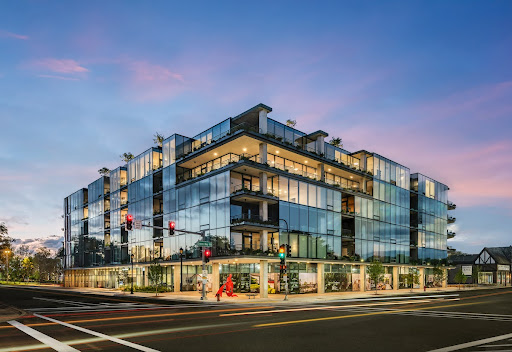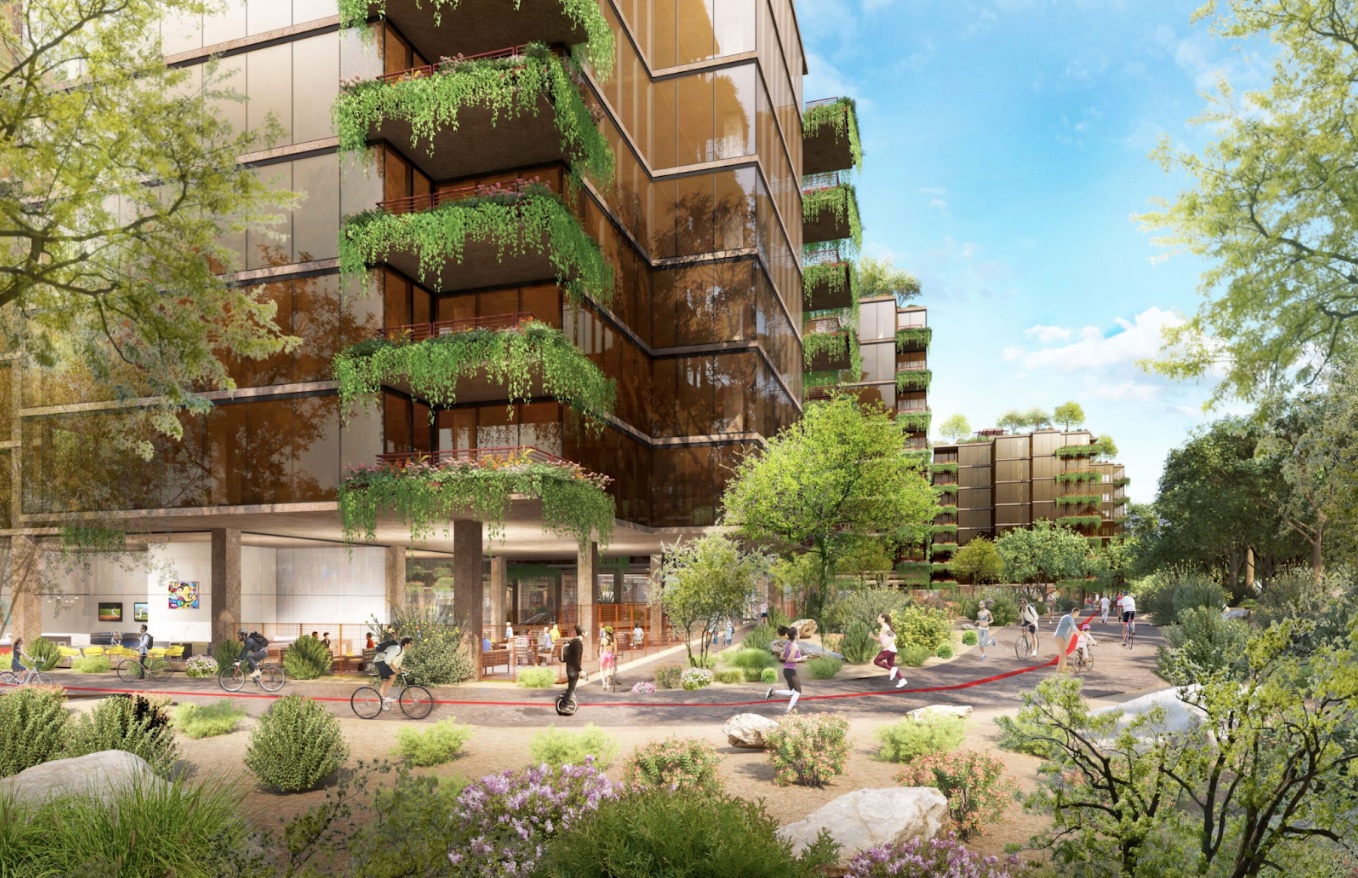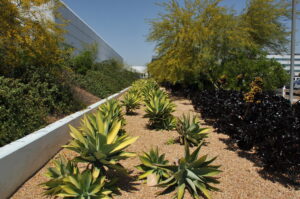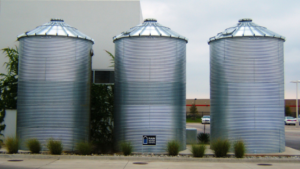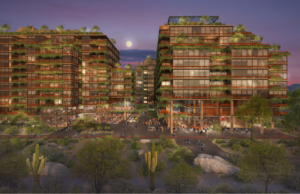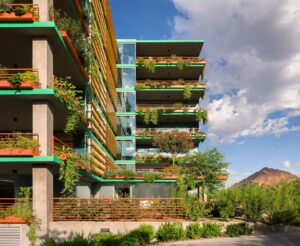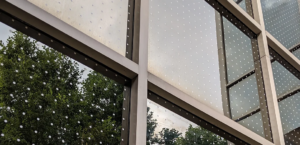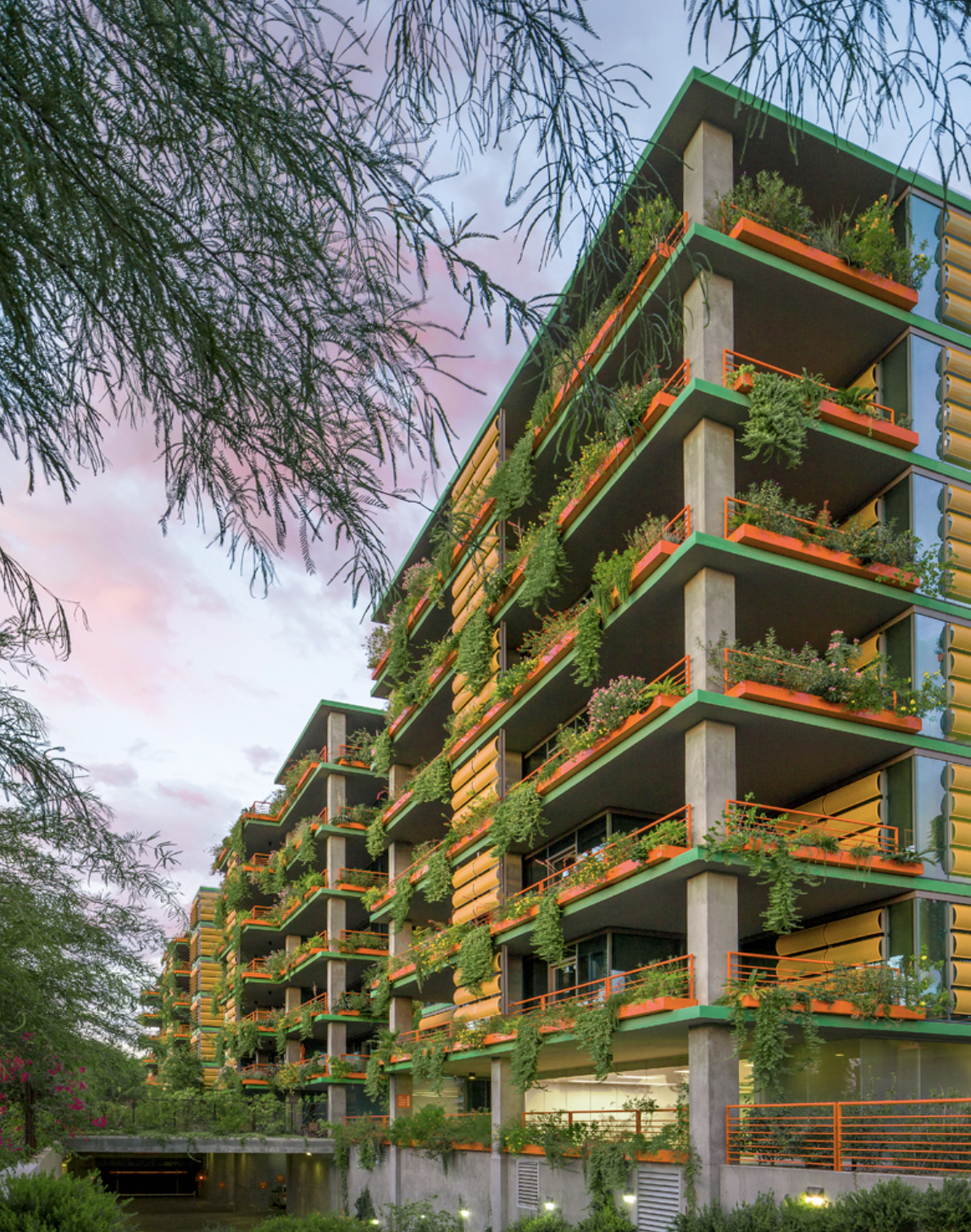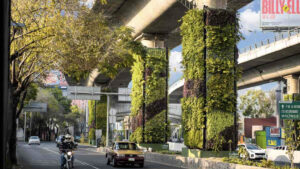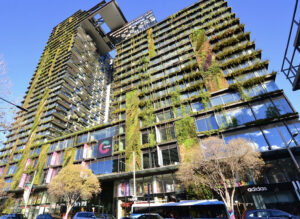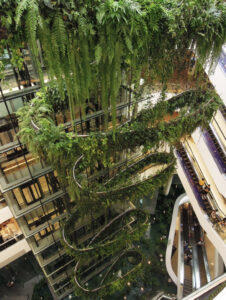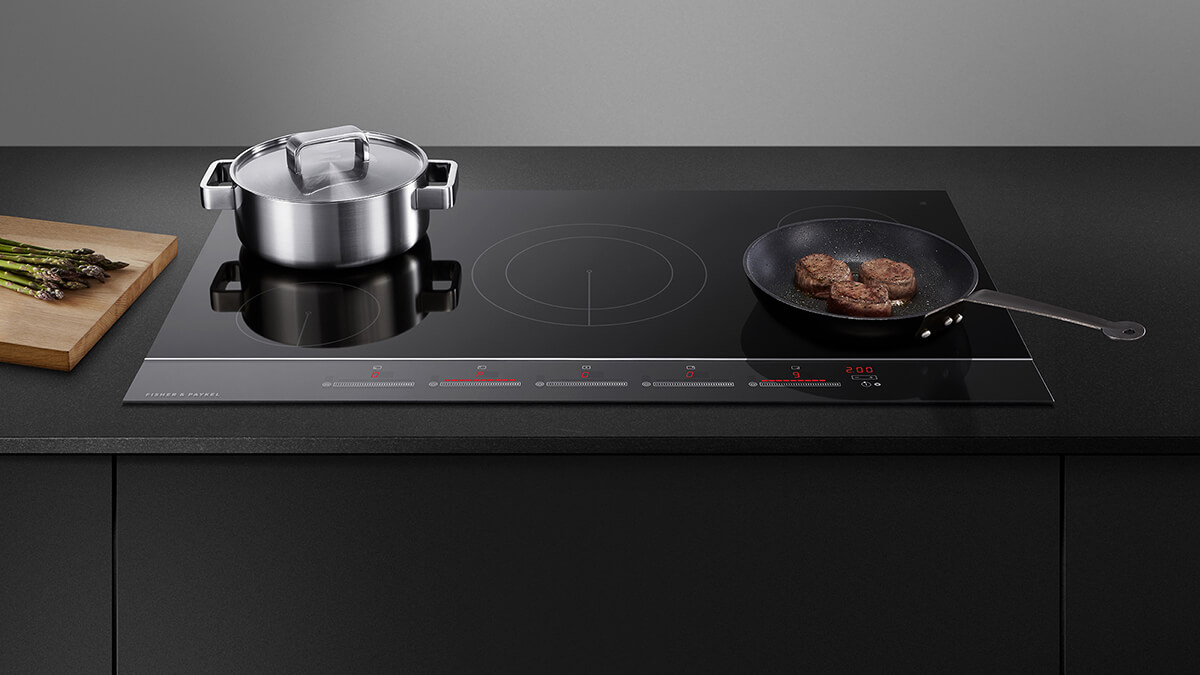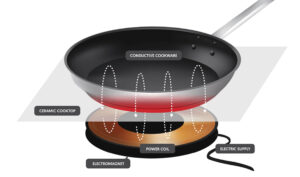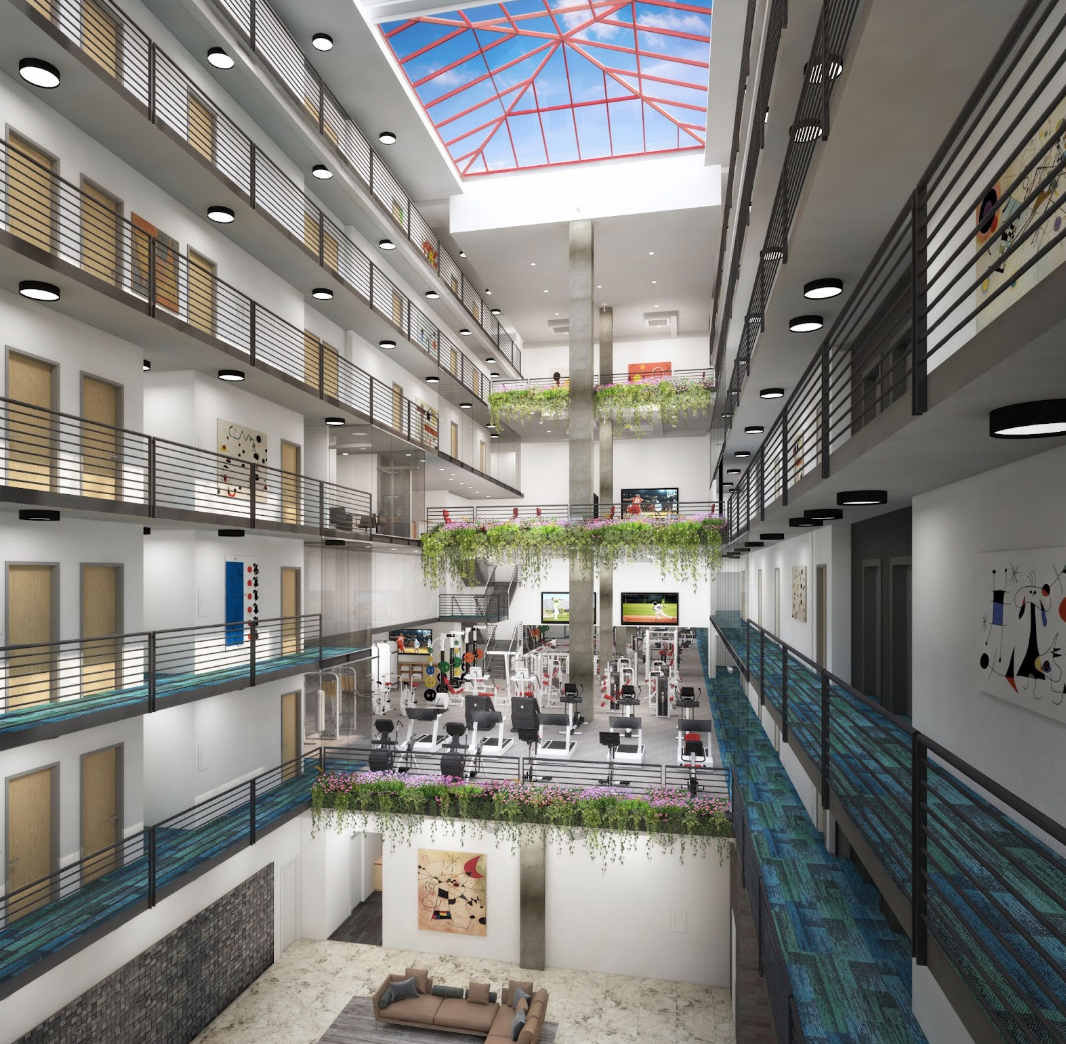With its name inspired by the word “verdure,” meaning lush, there’s no question that we’re embracing greenery and green spaces more than ever in our latest development, Optima Verdana®. The development not only welcomes our signature vertical landscaping system to the Midwest while complementing the surrounding neighborhood with private terraces with lush landscaping, a reaching sky deck, and a nature-bridging courtyard.
Within the comfort of their homes, some Optima Verdana residents have access to private landscaped terraces. Each terrace, rich with lush and ornate greenery, delivers personal greenspaces that complement the modern architecture surrounding them. Just a short stroll from each home, residents have access to Optima Verdana’s Skydeck and Garden Lounge, which provides even more access to sunlight, fresh foliage, and a seasonal herb garden beloved by the community.
Found in the heart of the community, Optima Verdana’s 1,500-square-foot open-air courtyard provides another amazing space for residents looking to immerse themselves in nature. The extensive greenspace features 7-foot-high garden walls, an abundance of verdant trees and many tranquil seating options for those looking to spend extra time outdoors.
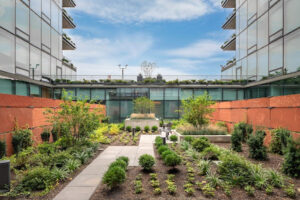
The highlight of Optima Verdana is the introduction of our signature vertical landscaping system to the Midwest. While Optima Lakeview® uses vertical landscaping in its indoor atrium, vertical landscaping is used throughout the entire building at Optima Verdna. Besides providing aesthetic values, the green feature is a key element of our sustainability initiatives and plays a critical role in maintaining a healthy environment. The system, with self-contained irrigation and drainage, provides a haven for local urban wildlife, promotes evaporative cooling, re-oxygenates the air, reduces dust and smog levels, reduces ambient noise and detains stormwater.
Like the green spaces in our other developments, Optima Verdana’s supply of greenery allows our residents to enjoy a wealth of benefits. Green areas in urban environments help provide ample space to stretch and engage around vegetation, improving cardiovascular health and relieving stress.
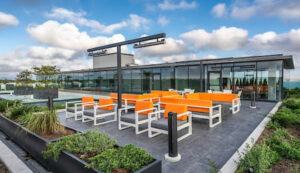
At Optima®, we are dedicated to harmonizing form and function by bringing the outdoors into our communities. The lush private terraces, tranquil courtyard and signature vertical landscaping at Optima Verdana welcome that outdoor experience and allow us to fashion a sanctuary of our own.
